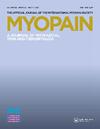Acute Effects of Static Stretching, Active Warm Up, or Passive Warm Up on Flexibility of the Plantar Flexor Muscles of Iranian Professional Female Taekwondo Athletes
引用次数: 5
Abstract
Abstract Objectives: Muscle flexibility is an important component of injury prevention in athletes. Active warm-up, passive warm-up and static stretching are different methods for increasing flexibility. Little clinical evidence is available regarding which of these methods has a greater role in increasing flexibility. This study was performed to compare acute effects of the above methods on the flexibility of the plantar flexor muscles of professional female taekwondo athletes. Methods: Female professional taekwondo athletes were randomly classified into three intervention protocol groups [active warm-up, passive warm-up, or static stretching, respectively]. Passive and active range of motion [ROM] was measured using a universal goniometer before and immediately after performing each of the designated flexibility protocols. Results: Thirty female athletes participated, providing 10 subjects for each group. There were no differences in age or body mass index between groups. The static-stretching protocol significantly increased active [p = 0.001] and passive [p = 0.001] ROM. The active warm-up protocol did not change either the active or passive ROM [p > 0.05]. The passive warm up protocol increased only the active ROM [p = 0.04]. Post hoc testing showed a significant difference not only between static stretching and active warm-up groups [p = 0.000], but also between static stretching and passive warm-up groups [p = 0.000]. There was no significant difference between the passive and active warm-up groups [p > 0.05]. Conclusions: Static stretching only protocol increased flexibility more than active and passive warm-up only protocols.静态拉伸、主动热身或被动热身对伊朗职业女跆拳道运动员足底屈肌柔韧性的急性影响
摘要目的:肌肉柔韧性是运动员损伤预防的重要组成部分。主动热身,被动热身和静态拉伸是增加柔韧性的不同方法。关于这些方法中哪一种在增加灵活性方面作用更大,临床证据很少。本研究比较上述方法对专业女跆拳道运动员足底屈肌柔韧性的急性影响。方法:将女性职业跆拳道运动员随机分为主动热身、被动热身和静态拉伸三个干预方案组。在执行每个指定的灵活性方案之前和之后,使用通用角计测量被动和主动活动范围(ROM)。结果:女运动员30名,每组10名。两组之间的年龄和体重指数没有差异。静态拉伸协议显著增加了主动[p = 0.001]和被动[p = 0.001] ROM,而主动热身协议没有改变主动或被动ROM [p > 0.05]。被动热身方案只增加了主动ROM [p = 0.04]。事后测试显示,不仅静态拉伸组与主动热身组之间存在显著差异[p = 0.000],静态拉伸组与被动热身组之间也存在显著差异[p = 0.000]。被动和主动热身组间差异无统计学意义[p > 0.05]。结论:静态拉伸方案比主动和被动热身方案更能增加柔韧性。
本文章由计算机程序翻译,如有差异,请以英文原文为准。
求助全文
约1分钟内获得全文
求助全文

 求助内容:
求助内容: 应助结果提醒方式:
应助结果提醒方式:


